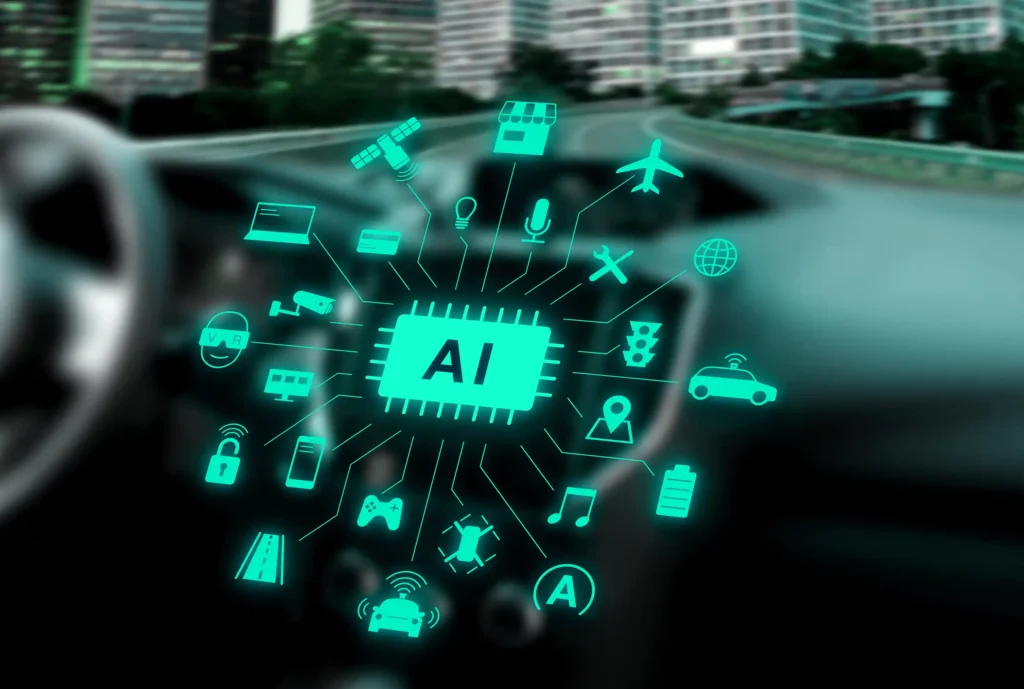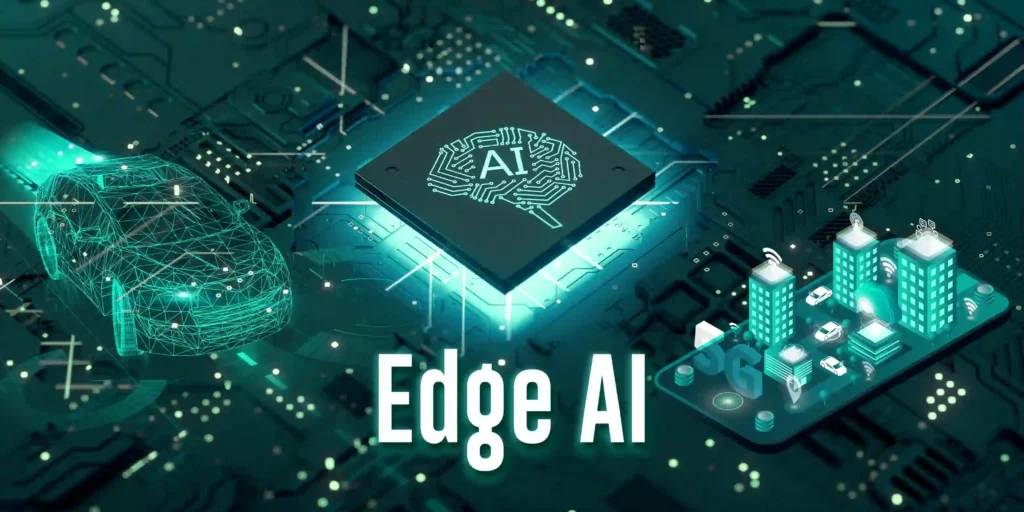The idea of edge AI has received massive attention within the fields of artificial intelligence and computing. Edge AI refers to the deployment of synthetic intelligence algorithms and models at once on area devices, which include smartphones, IoT gadgets, or local servers, instead of counting on cloud-based total processing.
Introduction
Edge computing plays a critical role in permitting edge AI. It entails processing information near its source instead of sending it to a centralized cloud server for evaluation. This decentralized technique brings several advantages, which include decreased delays, improved privacy and safety, and greater reliability.

The wise edge is on which side AI thrives. By using local processing power and storage competencies, smart side devices can carry out actual-time analytics and selection-making without relying closely on net connectivity or cloud resources.
The significance of Edge AI lies in its ability to carry intelligence closer to the information source. This allows faster reaction times for vital packages that require actual-time selection-making or low-put-off interactions. It reduces reliance on steady internet connectivity, making it ideal for eventualities wherein network availability may be constrained or unreliable.
Understanding the idea of edge AI is crucial because it opens new possibilities for decentralized synthetic intelligence applications. By harnessing nearby processing talents at the edge of networks, companies can release more performance and responsiveness in diverse domain names, ranging from self-sustaining motors to clever towns and commercial automation.
Key Benefits of Edge AI for Various Industries and Use Cases
Edge AI, additionally called part computing, is remodelling various industries by bringing actual-time analytics and choice-making abilities in the direction of the statistics source. This era has vast advantages across a range of sectors, which include self-sustaining vehicles, smart cities, and the healthcare enterprise.
One of the key blessings of edge AI is its capacity to process information at the edge of the network, disposing of the need for facts to be dispatched from side to side to a centralized cloud server. This permits faster response instances and decreases delays, making it ideal for packages that require real-time evaluation and decision-making.
In autonomous automobiles, edge AI performs an essential role in permitting on-board processing of sensor data. By analysing these facts regionally in the car, itself, it can make split-second choices without counting on an external server or net connection. This enhances safety and reliability with the aid of minimizing ability delays caused by community breaks.
Smart towns are another area where edge AI is having a substantial effect. By deploying AI algorithms at the brink of the network infrastructure, towns can analyse substantial quantities of sensor data in real-time. This allows them to optimize visitor glide, improve strength efficiency, decorate public safety measures, and more efficaciously manipulate sources.
The healthcare industry additionally benefits from AI packages. With real-time analytics at the edge, scientific gadgets can offer instantaneous feedback and alerts primarily based on patient vitals or different health parameters. This permits well-timed interventions in essential conditions and improves affected person results.
Edge AI offers several benefits throughout various industries. Its potential to methodically store records domestically on the network’s part permits real-time analytics and decision-making without counting on cloud servers or internet connectivity. From autonomous vehicles to clever cities and healthcare applications, this technology is about to transform how we engage with our environment while enhancing performance and enhancing ordinary stories.
The Role of Edge Devices in Enabling Edge AI Solutions
In the sphere of synthetic intelligence (AI), gadgets play a vital role in enabling edge AI solutions. These gadgets, which include sensors and Internet of Things (IoT) gadgets, are responsible for gathering statistics on the supply and processing them regionally on the tool itself.
Edge computing systems are designed to address the computational demands of AI algorithms on these aspects of devices. By bringing AI competencies toward where the information is generated, part computing minimizes delays, reduces bandwidth necessities, and complements real-time choice-making.
The use of area devices in conjunction with AI allows for a huge range of packages across numerous industries. For example, in clever towns, side devices can monitor visitor styles and optimize transportation routes in real-time. In healthcare settings, they could permit faraway-affected person tracking and early detection of fitness issues.
Edge AI answers are mainly useful in situations where connectivity can be constrained or unreliable. By processing data locally on the device, itself, those answers can maintain their features even if internet connectivity is disrupted.
The position of area gadgets in permitting edge AI answers is instrumental in unlocking new opportunities for automation, efficiency, and actual-time selection-making throughout industries. As technology continues to advance, we will count on, in addition, integration among these domain names to power innovation and enhance our daily lives.
Challenges and Limitations in Implementing Edge AI Solutions
Implementing edge AI answers comes with its fair share of demanding situations and barriers. One fundamental challenge is the electricity constraints faced in urban environments. Edge devices often have confined battery life or rely on intermittent energy resources, which could restrict the range of computational assets available for AI processing.
Limited computational assets additionally pose an undertaking when enforcing edge AI solutions. Edge devices commonly have much less processing electricity and memory compared to cloud servers, making it tough to run complex AI algorithms or manage massive datasets regionally.
Another considerable subject is security in outdoor environments. Edge devices are frequently deployed in far-flung or uncontrolled places, making them more vulnerable to bodily tampering or unauthorized access. Ensuring data privacy and protecting sensitive records will become vital while implementing edge AI solutions.
To overcome these challenges, researchers and engineers are continuously running on growing, power-efficient algorithms that could run effectively on resource-constrained gadgets. They are also exploring strategies like federated studying, where computation is sent throughout a couple of facet devices while preserving statistical privacy.
Addressing safety concerns involves implementing sturdy encryption protocols, authentication mechanisms, and steady communication channels to shield record integrity and prevent unauthorized gain of entry in certain environments.
While there are challenges and boundaries in imposing edge AI answers, improvements in technology retain the power-to-power innovation in the direction of overcoming these boundaries. As more efficient hardware designs and optimized algorithms emerge, the capacity for deploying powerful AI capabilities in the network’s area will become increasingly significant.
Leading Examples of Successful Edge AI Deployments
Edge AI, the deployment of artificial intelligence algorithms without delay on facet gadgets, has seen full-size success in diverse industries. Prominent examples of successful AI deployments can be in the domains of smart domestic devices, business automation systems, and retail analytics.
In the sector of clever home devices, edge AI allows better capability and an improved user experience. For instance, voice-activated virtual assistants like Amazon Echo or Google Home utilize edge AI to measure speech popularity and natural language processing regionally on the tool itself. This allows for quicker response instances and extended privateness, as sensitive information no longer wants to be sent to cloud servers.
Industrial automation structures also benefit substantially from edge AI deployments. By applying real-time statistics processing capabilities at the edge, these structures could make brief choices without relying on a consistent connection to the cloud. Edge AI permits predictive preservation through analysing sensor records from machines and figuring out capacity faults earlier than they occur. As a result, there is much less downtime and greater operational performance.
In retail analytics solutions, edge AI plays an essential role in accumulating insights from client behaviour in real-time. By deploying sensible cameras or sensors at bodily shops, shops can examine purchaser movements, demographics, and possibilities without compromising individual privacy. Edge AI algorithms use these statistics regionally to offer immediate comments on shop layouts, product placements, or personalized advertising techniques.
These examples highlight how edge AI deployments are remodeling diverse industries by enabling shrewd selection-making based on where facts are generated. As generation continues to strengthen unexpectedly, we can expect even more innovative programs of edge AI in the future.
FAQS
Edge AI, or side artificial intelligence, refers to the deployment of AI algorithms and machine learning models on nearby devices, such as smartphones, IoT gadgets, and edge computing nodes, in place of relying on cloud-primarily based servers. This permits actual-time processing and decision-making at the threshold of the community, decreasing latency and enhancing privacy.
Edge AI is crucial because it enables devices to perform AI tasks locally without the need for a steady net connection. This can enhance reaction instances for applications like voice recognition, image analysis, and self-sufficient structures while additionally retaining record privacy and lowering the burden on cloud servers.
Edge AI is utilized in various packages, together with self-sufficient cars, business automation, clever cameras, voice assistants, and wearable devices. It’s treasured in eventualities in which low latency and statistical privacy are critical, as well as in conditions where net connectivity may be limited or unreliable.
Edge AI processes records locally at the device, while cloud-primarily based AI is based on remote servers for computation. Edge AI offers quicker response times and reduced dependency on the net, making it appropriate for actual-time applications, while cloud-primarily based AI is especially suitable for extensive tasks and packages that require massive-scale statistics evaluation.
Conclusion
The combination of synthetic intelligence and side computing, is hastily evolving and can convert diverse industries. One considerable trend in edge AI is the use of federated learning for privacy-maintaining facet AI models.
Federated learning allows fashions to be taught domestically on part devices without compromising facts privacy. This method allows individual gadgets to analyze their own information while contributing to an international version’s development. As worries over facts and privacy preserve an upward push, federated learning gives a promising solution for deploying AI on the brink.
READ MORE!!!!!
